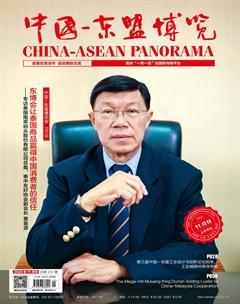后疫情时代,看亚洲新兴经济体如何乘风破浪
马修·罗伯纳

目前,亞洲新兴经济体在抗击新冠肺炎疫情方面处于不同阶段。一些国家逐渐放宽社交隔离措施,经济活动重启就绪,即将迎来隧道尽头的曙光。而部分国家仍处于全力抗疫、封锁隔离的阶段。
不论各国处于什么阶段,它们都必须对现状进行深刻思考,采取适当措施预防危机,改善经济长期发展前景。新冠肺炎疫情对亚洲的发展中国家的经济和社会都造成了巨大冲击,印尼也未能幸免。
旅行限制和隔离措施打击了全球贸易和就业市场,财政赤字和债务扩大也将持续恶化。纵使大家对旅游业、商业和消费的信心稍有重建,但在严峻的全球经济形势和新一轮潜在疫情暴发的影响下,大家很快又被笼罩在阴影之中。
尽管当前仍面临着诸多挑战,亚洲的发展中国家仍然具备长期发展的潜质。
一方面,据联合国2019年发布的《世界人口展望》,亚洲新兴经济体的人口结构优势明显,在印度、孟加拉国和东南亚地区的人口中,20岁以下人口占总人口的1/3以上;另一方面,亚洲新兴经济体的创新能力、高端制造业和服务业能力逐步提升,各国国内所涌现的大量电子商务、电子支付等相关公司,都印证了这一点。
另一方面,新冠肺炎疫情在一定程度上刺激了家庭、公司和企业家对新理念、新技术的追求,比如购物消费、商品销售、银行业务、课程学习和社交方式等。此外,外汇储备上升、外债规模下降以及经常账户收支平衡,这令外界普遍认为,相比于1997~1998年亚洲金融危机和2008年全球金融危机时期,如今的亚洲新兴经济体更有能力抵御外部金融冲击。
随着2020年危机的出现,各国政府机构及其央行迅速采取降息、增加资金流动性等金融措施帮助个人、家庭以及企业共度难关。
2020年5月,印尼总统佐科·维多多宣布印尼政府将放宽社交隔离政策并进入更为持久的社会限制阶段。同时,为了稳定经济,政府也将采取财政刺激等调控手段提升医疗保障水平,推动经济复苏。
诚然,新冠肺炎疫情所带来的难题将与之长期共存。政策制定者也应站在投资者和经商者的角度,以提高新兴经济体的吸引力为目的,采取胆子大、步子稳的策略,主要体现在以下3个方面。
第一,改善当地经营环境,为企业复苏提供助力。小至削减繁文缛节,打击贪污腐败,大至取消对外商投资的限制,促进劳动力市场改革。许多国家在此方面已取得卓越成就,在此基础上发展将使它们处于有利地位。
第二,增加各领域投资,提高市场竞争力和生产力,尤其是增加在交通和能源基础设施、电信和互联网连接、医疗保健、智慧教育和低碳化城市管理等方面的投资。《亚洲发展展望2018》报告显示,这些领域将是支撑发展中国家经济长期增长的关键,同时也有助于提高机器人、自动化、3D打印和人工智能等技术的进步。不论是深谋远虑的基础设施建设,还是危机过后的基础设施改善,二者对经济增长的持续性与韧性都至关重要。
第三,制定应对气候变化政策,并采取相应措施。东南亚和南亚国家受气候变化影响严重,达卡、胡志明、雅加达、曼谷和孟买等地势较低的城市极易受到风暴和海平面上升的影响。如今,为发展当地经济,越来越多的国家或地区重视抵御气候灾害的能力,集资建设绿化、加强气候防护,这也将成为影响当地企业和投资者经营管理的重要因素。
新冠肺炎疫情给人类的生命和经济造成了不可估量的损失,其影响仍将持续数月,甚至数年。然而,危机与机遇总是并存的。政策制定者和企业管理者不得不重新审视危机并加快改革,把握机遇的新兴经济体不仅能迎来隧道尽头的曙光,还能夯实基础,在世界经济的大海中乘风破浪。
·来源:《雅加达邮报》
·编译:盛洁
In an age of disruption, no disrupter has been greater than the COVID-19. The coronaviruss toll on human health is undeniable. But business has also been hit hard. Lockdowns and quarantines have broken supply chains around the world. Shipments of goods, including food and medicines, have run into roadblocks, leaving countless people in need. The virus exploited weaknesses in our immune system. The pandemic exposed vulnerabilities in our global system of manufacturing and trade.
One country that has managed to contain the pandemic, keep its factories churning, and supply chains flowing is the Kingdom of Thailand.
Nowhere has that been more evident than in the Eastern Economic Corridor (EEC), Thailands advanced development zone, and home to clusters of hi-tech industries. The pandemic forced parts of the economy to shut down, but the Corridors logistics networks-its ports, airports, trains, highways, and digital links-remained operational. Meanwhile, the government is building even more infrastructure to boost connectivity further. Investors are taking note of that commitment and resilience as they rethink how to do business in a changing world.
“Business continuity is now a more important consideration, as is diversification,” said Dr. Luxmon Attapich, Deputy Secretary-General of the EEC. Thailand and the EEC are providing those. Once regarded as a backwater, Southeast Asia is a viable commercial supply chain location, according to the U.S.-ASEAN Business Council. And within Southeast Asia, the EEC is the largest, most strategically located, fully integrated and connected hub for advanced industries.
The Corridors wealth of supporting businesses and logistical options saved the day for Quantum SPT, said Mario Schiller, the companys operations manager. When some countries shut down and stopped producing parts for the industrial pumps Quantum manufactures in Thailand for export, Schiller was able to find Thai firms willing and able to make them. He intends to keep sourcing from those companies going forward. When the movement of people was restricted to stop the spread of the virus, the government ensured his employees could still get to work. When distressed global airlines canceled cargo flights, he was able to ship goods from the EECs Laem Chabang seaport. “Thailand showed it is crisis-proof. It is a great place to be,” Schiller said.
The EECs 12 targeted industries are saving the day for others too. The Corridors companies are making essential medical equipment and pharmaceuticals. Its firms excel in biotechnology. They are innovating to produce healthy “food for the future”. Others produce smart electronics, next-generation vehicles, and aviation and aerospace technology. All are supported by an extensive ecosystem of suppliers, skilled workers, research facilities, and advanced logistics.
One silver lining of the pandemic has been an acceleration in the adoption of digital technologies, another EEC targeted sector. Companies in the EEC are rapidly incorporating automation, robotics, and artificial intelligence in production. The Corridors expanding 5G network facilitates technologies that require the Internet of Things.
Thailand leads ASEAN in 5G rollout, according to the Nikkei Asian Review. By the end of this year, over nine million Thais will be covered by 5G with that number projected to exceed 30 million in the next five years.
With 134% mobile phone penetration and 100% of mobile Internet users connected to broadband, Thais are ready for 5G. Should another crisis strike, businesses in Thailand are well prepared to keep working.
The embrace of innovation and cutting-edge technologies complements the Kingdoms traditional strengths. Thailand has a long track record of business-friendly policies, a willingness to meet investors needs, a diligent and adaptable workforce, commitment to free trade, and a welcoming attitude to foreigners. The Kingdom is also steadily rising in global rankings for ease of doing business, competitiveness, E-government, innovation, logistics performance, and global connectedness. U.S. News and World Report named Thailand the best country in the world for starting a business in 2019.
The Kingdom is striving to do even better for investors. The government recently cut taxes in half for companies that invest at least US$ 33 million in businesses involved in the EECs 12 targeted industries. More tax breaks are available for companies investing in automation, higher technologies, research, and skills development.
Thailand has weathered global economic contagions, a tsunami, massive floods and other disasters. And every time it emerges stronger and more resilient. In this era of disruption, Thailand is proving it is among the strongest links in any supply chain.
· Source: Ministry of Foreign Affairs, Kingdom of Thailand

